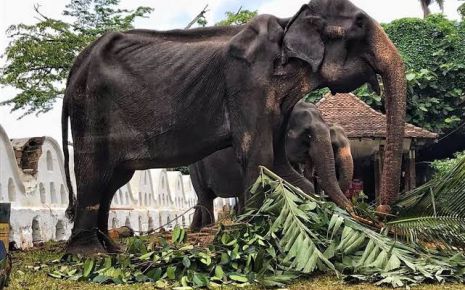Signs And Symptoms Of Drowning And Drowning Death
Recognizing the signs and symptoms of drowning and drowning death is crucial in
providing prompt intervention, potentially saving a person's life and find out
the cause of death. While the media often portrays drowning as a dramatic event
with loud noises and cries for help, the reality is often much more subtle.
Here are some indications to be aware of in a drowning situation:
Conclusion:
It is crucial to recognize these indicators early on and respond promptly, as this can greatly increase the chances of survival. Safety should always be a top priority in water environments, and it is essential to stay vigilant for any signs of distress. If you suspect someone is drowning, immediately call for assistance and, if qualified, provide aid or perform CPR until professional help arrives.
Nevertheless, determining whether the victim drowned accidentally, suicidally, or under suspicious circumstances, such as being pushed into water by somebody or miscreants throwing him into water after committing his murder somewhere else, remains a subject of police and forensic investigation based on examination of witnesses and other material and scientific evidences.
Written By: Md.Imran Wahab, IPS, IGP, Provisioning, West Bengal
Email: [email protected], Ph no: 9836576565
Here are some indications to be aware of in a drowning situation:
- Silent Drowning: Drowning victims may be unable to call for help as their vocal cords may go into spasms, making it impossible for them to make any noise.
- Bobbing Up and Down: Those in distress may struggle to keep their head above water, resulting in repeated submerging due to exhaustion.
- Gasping for Air: Victims may be observed attempting to catch their breath but may only be able to get their mouth above the water intermittently.
- Glassy or Empty Eyes: The person's eyes may seem vacant, unfocused, or even closed.
- Flailing Arms: Initially, individuals who are drowning may display flailing arms, but this may transition to more instinctive movements as their energy depletes.
- Hyperventilation or No Breathing: In some cases, the person may hyperventilate or stop breathing completely after being submerged.
- Vertical in the Water: Drowning victims may struggle to stay horizontal and instead be in a vertical position with their head tilted back, attempting to keep their mouth above water.
- Inability to Respond: They may also be unable to respond to calls or commands due to their focus on trying to breathe.
- Quietness: Drowning situations are often quiet, with little to no noise or splashing as the victim's sole focus is on breathing.
- Unconsciousness: If someone remains submerged for a prolonged period, they may lose consciousness.
- Cyanosis: A lack of oxygen may cause the person's lips or skin to turn blue, a condition known as cyanosis.
- Lack of Movement: In the final stages of drowning, the person may become motionless and sink below the water's surface.
- Presence of Diatoms: The presence of diatoms in the lungs and other tissues can indicate that water was aspirated into the airways in a case of ante-mortem drowning, but other evidence and factors must also be taken into account when determining the cause of death.
- Plant Materials in Clenched Hand: During postmortem examinations, forensic investigators have the ability to observe various forms of plant material, including stems, leaves, and algae, tightly gripped in the hands of a drowning victim. This discovery can serve as valuable evidence, indicating that the victim was conscious and struggled while submerged. It is important to note, however, that the absence of plant material in the hands should not automatically rule out drowning, as not all victims exhibit this behaviour.
- Bloating of Body: When a person drowns, their body may experience bloating due to water entering their airways and lungs, causing an imbalance and the build-up of gases. This phenomenon, referred to as postmortem bloating, results in the swelling of the body, especially in the stomach and face, as decay sets in. It is a typical occurrence in drowning fatalities during the initial stages of postmortem alterations.
Conclusion:
It is crucial to recognize these indicators early on and respond promptly, as this can greatly increase the chances of survival. Safety should always be a top priority in water environments, and it is essential to stay vigilant for any signs of distress. If you suspect someone is drowning, immediately call for assistance and, if qualified, provide aid or perform CPR until professional help arrives.
Nevertheless, determining whether the victim drowned accidentally, suicidally, or under suspicious circumstances, such as being pushed into water by somebody or miscreants throwing him into water after committing his murder somewhere else, remains a subject of police and forensic investigation based on examination of witnesses and other material and scientific evidences.
Written By: Md.Imran Wahab, IPS, IGP, Provisioning, West Bengal
Email: [email protected], Ph no: 9836576565
Law Article in India
Legal Question & Answers
Lawyers in India - Search By City
LawArticles
How To File For Mutual Divorce In Delhi

How To File For Mutual Divorce In Delhi Mutual Consent Divorce is the Simplest Way to Obtain a D...
Increased Age For Girls Marriage

It is hoped that the Prohibition of Child Marriage (Amendment) Bill, 2021, which intends to inc...
Facade of Social Media

One may very easily get absorbed in the lives of others as one scrolls through a Facebook news ...
Section 482 CrPc - Quashing Of FIR: Guid...

The Inherent power under Section 482 in The Code Of Criminal Procedure, 1973 (37th Chapter of t...
The Uniform Civil Code (UCC) in India: A...

The Uniform Civil Code (UCC) is a concept that proposes the unification of personal laws across...
Role Of Artificial Intelligence In Legal...

Artificial intelligence (AI) is revolutionizing various sectors of the economy, and the legal i...








Please Drop Your Comments